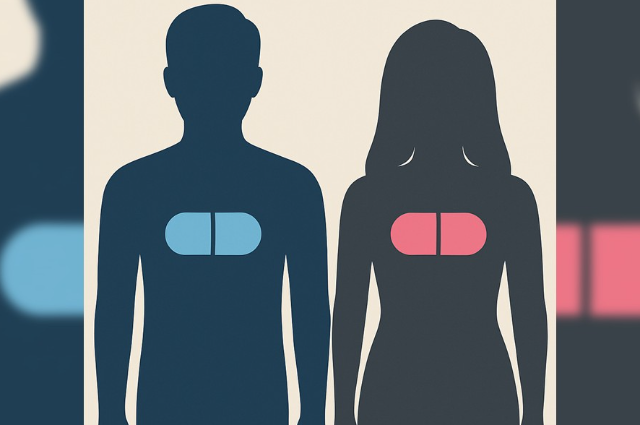
For most of medical history, the body used to define “normal” has been male. From the animals tested in labs to the patients recruited in clinical trials, the system wasn’t designed with women in mind. It wasn’t just a scientific oversight—it was a reflection of a deeper problem: a medical world shaped by patriarchy.
For decades, men made the rules. They built the frameworks, wrote the protocols, and decided who mattered in research. And the result? A healthcare system that routinely fails women by misdiagnosing their symptoms, prescribing them the wrong doses, or simply ignoring the conditions that primarily affect them.
What Pushed Women Out?
In 1977, the FDA banned women of childbearing age from participating in early-stage drug trials. They said it was about protecting unborn children after the thalidomide disaster. But in reality, it was a way to avoid legal risk and complexity, without considering what it would cost women in the long run.
This move assumed women were too fragile or too complicated to include. It didn’t ask how to safely include them, but it just excluded them altogether. And even after the policy was reversed in the 90s, the system didn’t suddenly change. The structure designed by and for men was still in place.
Today, women still make up less than 40% of participants in critical areas like heart disease and stroke research, even though these are leading causes of death for them. The message is subtle, but clear that women are still treated as an afterthought.
In medicine, men are the baseline. Women are the deviation, something to be controlled, excluded, or corrected for. But the truth is, our bodies are not just smaller versions of men’s. Women have different hormones, fat distribution, and drug metabolism. And when those differences are ignored, it leads to dangerous outcomes.
One striking example? The sleep aid Ambien. For years, women were prescribed the same dose as men, until it was discovered they metabolized it more slowly, causing morning dizziness and impaired driving. Only then did the FDA revise the dosage for women specifically.
That change came after the damage had already been done. Because that’s how patriarchal systems work, they only respond once the risk becomes impossible to ignore.
The Bias Became Protocol
Sometimes, the exclusion of women is deliberate. Jill Fisher, a social medicine professor, reported that one trial removed women from a study after initial results showed they had more side effects. Rather than investigate why, researchers decided it was easier to make the drug look safer by erasing women from the data.
It was more strategic than scientific. A strategy rooted in a system that sees female anatomy not as valuable data, but as a liability. Approving drugs without understanding how they affect half the population is systemic harm.
What Men don’t face -
Outside the lab, the burden continues. Women are often caregivers, employees, and mothers all at once. Clinical trials rarely account for that. Flexible hours? Childcare? Remote check-ins? Rarely offered. Because again, the system was built with male lives in mind, assuming availability, mobility, and independence.
The rules get even stricter and more protective when women are pregnant. Pregnant women are excluded from nearly all trials, not because they shouldn’t be included, but because including them is considered too risky legally. So instead of figuring out how to protect and serve them, the system chooses to protect itself.
And the results become decades-old treatments. Outdated protocols. A complete lack of investment in safe, effective options for pregnancy.
When women’s pain is ignored, conditions that affect mostly women, like endometriosis, get dismissed and underfunded. It still takes up to 9 years to diagnose endometriosis, a condition that affects 1 in 10 women. Why? Because women’s pain has never been taken seriously in a system built to trust men first.
Even the 2001 Institute of Medicine report, Does Sex Matter?, was a wake-up call that should have shifted the narrative. It confirmed that sex affects every layer of human health. Yet over 20 years later, sex is still seen as a variable to control, not a foundation to build on.
Slow Change In The System -
Only recently, in January 2025, did the FDA introduce new guidelines encouraging the inclusion of women in early-phase trials. These changes recommend not only lifting outdated restrictions but also studying how hormones and contraceptives might affect drug behaviour.
It’s progress, but a slow one. And it's only happening because of growing pressure from researchers, advocates, and women themselves, pushing back against decades of structural neglect.
Final Thought -
This isn’t about fixing a minor flaw; it’s about challenging a foundation that was never built for women in the first place. Real equity in healthcare means rethinking everything, how research is funded, how trials are designed, and how we define “normal.” It means acknowledging that for too long, women were silenced, sidelined, and sacrificed for the sake of simplicity.
Women deserve more than inclusion; they deserve a system that sees them, studies them, and takes their health as seriously as it does men's. Because medicine shouldn’t be male by default. And change won’t come until we tear down the systems that made it that way.
